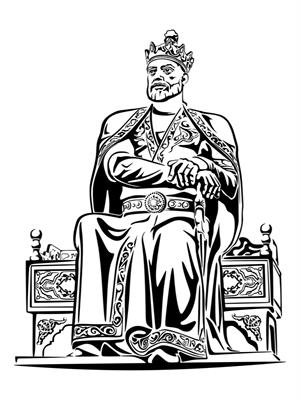
PUMPA - SMART LEARNING
எங்கள் ஆசிரியர்களுடன் 1-ஆன்-1 ஆலோசனை நேரத்தைப் பெறுங்கள். டாப்பர் ஆவதற்கு நாங்கள் பயிற்சி அளிப்போம்
Book Free DemoThe Timurian Invasion (1398)
- Timur, the ruler of Samarkand, a region around central Asia, entered India through passes of northern sectors. He later captured some parts of the north-western part of India. He took his wrath on Delhi in \(1398\ \)by massacring and leaving lakhs of people dead.
- One of his aims was to convert the infidel Hindu people to Islam and thus purify them from the sins of their past, which he believed strongly.

Timur – The Marauder
- The brutal assault on Delhi by Timur send shivers to the rest of the nation. Indian rulers were unable to defend their territories.
- The carnage was such that it was nearly impossible to recover the lost strength for any Tughlaq ruler and come back to the throne.
- He then extended his assault on Punjab, carried huge war booties of gold, and captured many artisans, carpenters, and masons to enhance his city in Samarkhand.
Sayyid dynasty: (1414 - 1451)
- This dynasty came into existence after the brutal assault and leaving of Timur, who left an irreparable scar in the history of India.
- The kingdom was scattered into many pieces but still hungover for a century till the invasion of Mughals; Khisir Khan, the governor of Timur, established the dynasty.
- Khisir khan founded the Sayyid dynasty in the year \(1414\), which lasted till \(1451\). The last of the rulers was Alauddin Alam shah, the weakest of all the Sayyid rulers who stepped down in 1451.
The Lodi dynasty: (1451 - 1526)
- The abdication of the last ruler of the Sayyid dynasty led Bahlol Lodi to took over the reins of Delhi. Thus, he established a new dynasty named the Lodi dynasty. The Lodi’s belong to Afghan, and so they are also known as the Afghan dynasty.
- These Lodi's are the last of the dynasties who ruled Delhi under the name of the Delhi sultanate. Bahlol Lodi, the founder, was succeeded by his son Sikander Lodi.
Gas-i-Sikandar: This was a new measurement yard introduced by Sikandar Lodi to measure the grains and abolished the Octroi tax on grains.
- Sikander Lodi was more inclined towards art and learning. To display his penchant for architecture, he established the city of Agra and made it his capital. He was orthodox and a bigot who brought back Jisiya on Hindus.
- Sikander met his end in \(1517\), and thus the baton was passed to his son Ibrahim Lodi, the last ruler of the Delhi sultanate and the Lodi dynasty. Ibrahim was defeated in the Battle of Panipat by Babur, which took place in the year \(1526\).
Gulruk: Sikandar Lodi’s interest in arts led him to write poems of high reputation. He also composed his poems under the pen name “ Gurluk”.
- With the victory of Babur, the curtains for the Lodi dynasty and Delhi sultanate was drawn, Babur after reaping victory in the Panipat battle, established the mighty Mughal empire.